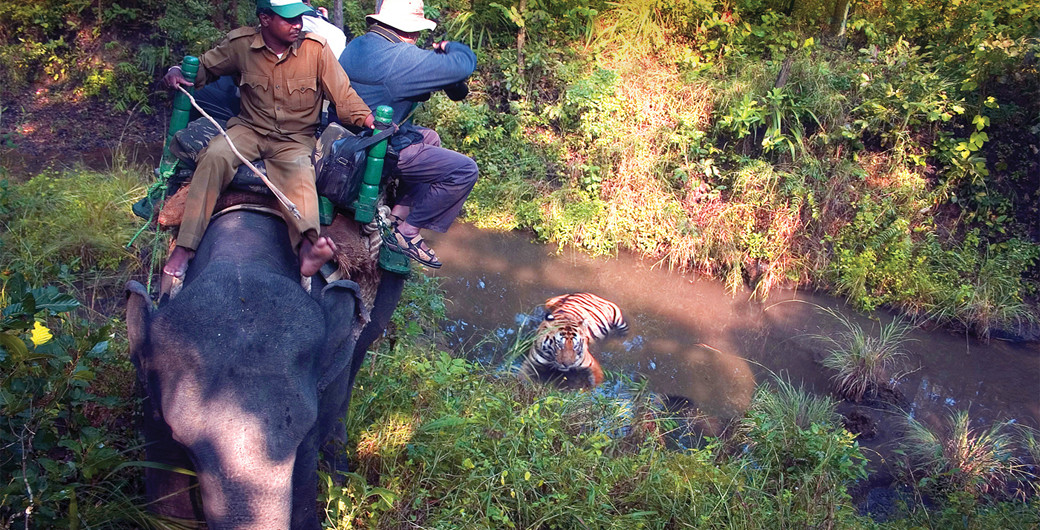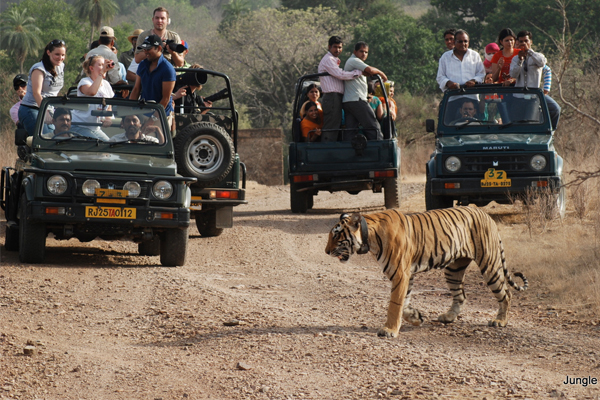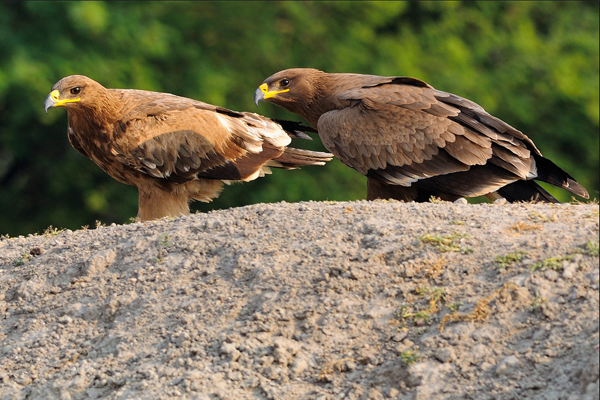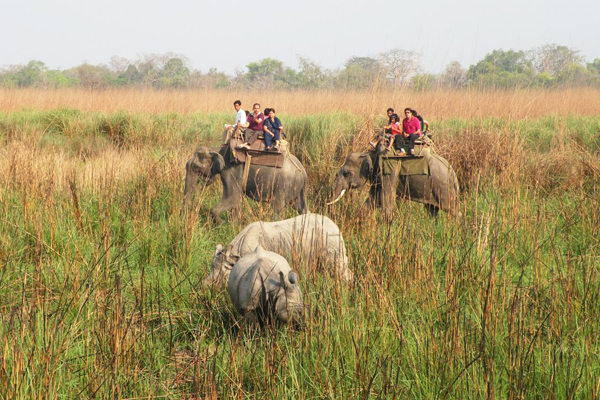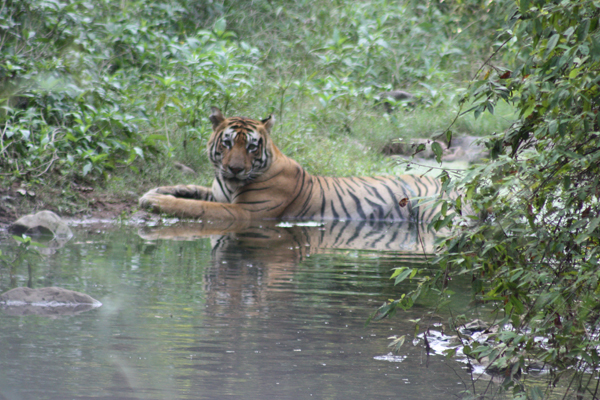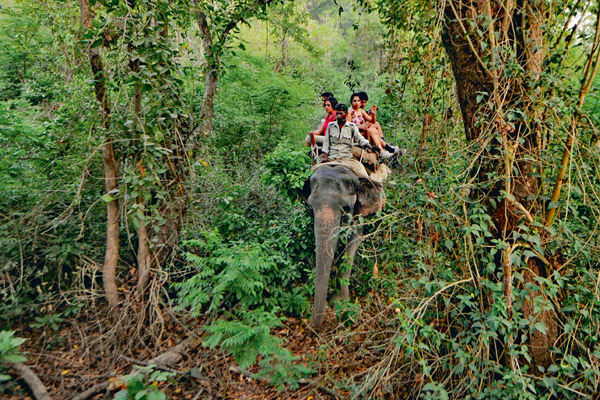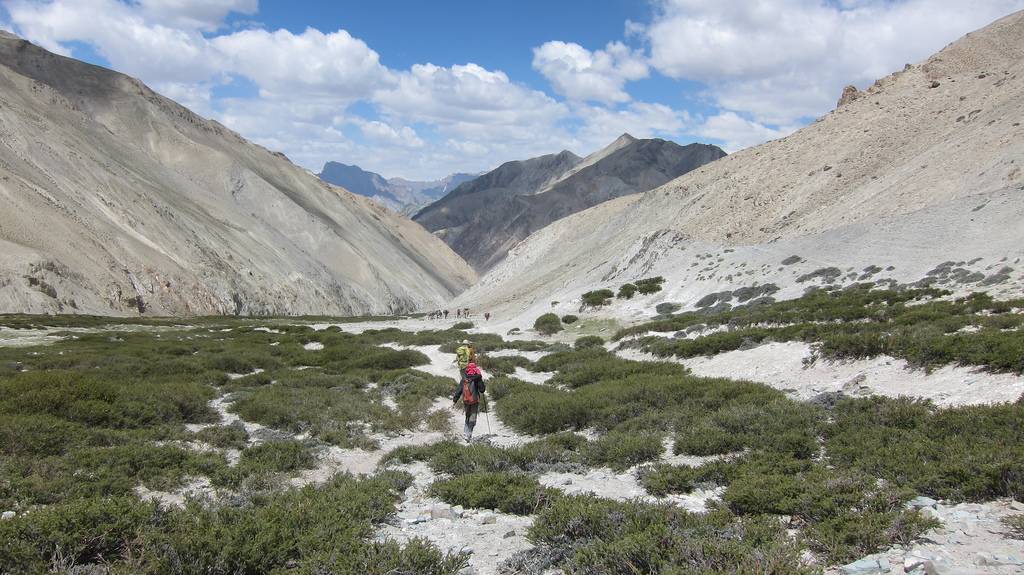India is renowned for its rich, untouched and extensive spread of dense forests which are home to many popular wildlife Tours like the Indian elephants, Asiatic lions, royal Bengal tigers etc. India has nearly 70% of the world’s population of tigers and the largest Asian Elephant population in the world. North India prides itself on having close to 40% of the entire area of forest cover in India, which is why the chances of spotting Wildlife Tours in North India are the greatest. The lush green forests of North India are home to a diverse species of flora and fauna creating a serene habitat for the animals. North India has an overwhelming inflow of wildlife enthusiasts because of its well-maintained forest resorts, greater chance of wildlife-sighting and an overall pleasurable experience for the visitor. There are around 25 major national parks in North India of which the following 5 national parks can be undoubtedly claimed to be the best in terms of chances of animal sighting, visitor experience, ambience etc.
Ranthambore National Park
This park is one of the largest and the most beautiful national parks in India with the Banas River and the Chambal River enhancing the serene ambience of the place. This park is located in the northern state of Rajasthan accommodating around 70 tigers which increases the odds of coming face-to-face with these big cats. Common sightings at this park are tigers, leopards, nilgai, black bucks, flying foxes, striped hyenas, etc. It also houses a wide variety of birds and reptiles like the Indian Pythons, marsh crocodiles, etc. The park’s terrain has a mix of deciduous forests and open grasslands. There are over 540 flowering plants. The famous Ranthambore Fort, one of the oldest forts in India, is part of the World Heritage Site and overlooks the whole park from the top of a hill. One can get a bird’s-eye view of the terrain from this fort and a pair of binoculars can enhance the joyous experience. Tiger poaching activities have been unmasked in the past few years but, there has been a substantial increase in the tiger population thanks to the anti-poaching campaigns.
Open from: Ranthambore national park is open from October to June.
Weather Conditions: Being in the desert state of Rajasthan, the summers here are very hot with the temperatures reaching up to 48 degrees and winters are extremely cold.
Best time to visit: April-June which is the hottest part of the year, is the best time to see tigers in the spectacular landscape of the Ranthambore National park.
Bharatpur Bird Sanctuary
Bharatpur Bird Sanctuary now known as Keoladeo National Park, is a man-made park that extends over 29 sq. kms and is considered to be the largest bird sanctuary in Asia. It has been declared as a national park and also as a world heritage site, adding to its pride. The park is located in Rajasthan and being in close proximity to Agra, the city of Taj Mahal, it is easily accessible to tourists. The park is situated at the confluence of the Gambhir River and the Banganga River accommodating over 375 species of birds during the peak hibernal season. Being a hunting ground for waterfowl in the past, the park now serves as a grazing ground for wild animals like the nilgai, chital deer as well as the local village cattle. The park’s terrain is semi-arid with a mix of dry deciduous forests and dry grasslands. Some artificially managed marshes can be sighted in the park. The park plays host to many migratory birds from Turkmenistan, China, Afghanistan, etc. like Saurus, Crane, geese, duck and even the rare Siberian Crane.
Open from: The park is open throughout the year yet the best time to watch the resident species is August -November and the migratory species is October-February.
Weather conditions: Being in a desert region, Bharatpur has hot summers and cold winters.
Dudhwa National Park
Extending over 490 sq.kms, Dudhwa National Park is one of the largest national parks of India. It is home to the most magnificent Sal forests in India with some its trees over 150 years old and 70 feet tall. It has the world’s largest and densest forests with its mixed terrain alternating between massive grasslands and swamps. Started as a swamp deer conservatory park, it became a major tiger reserve under the ‘Project Tiger’ initiative. Dudhwa national park now has over 141 tigers, swamp deers, sambhars, Indian rhinoceros, sloth bear etc.
Open from: The Park is open from November to June. But the best time to visit is November to May, since, as summer creeps in, it may be too hot and humid.
Weather conditions: The Park has a subtropical climate with humid and hot summers and dry and not too cold winters.
Accessibility: Dudhwa National Park is easily accessible by road or train.
Sariska Tiger Reserve
Located in the Alwar district of Rajasthan is the world’s first tiger reserve to have successfully relocated tigers. Tigers from the other major national parks are being relocated to Sariska National Park under the Project Tiger programme and the bengal tigers of the Sariska tiger reserve have been a major attraction for tourists from all around the world. Sariska has an ecologically diverse flora and fauna. It attracts animal and bird watchers alike, housing the largest population of peafowls in India,
golden-backed woodpeckers, crested serpent eagles etc. Its tiger reserve also shelters leopards, hyenas, jackals and jungle cats. Its Siliserh Lake is the breeding ground for a large number of crocodiles. Sariska has a dry and rocky landscape with its dry deciduous forests, grasslands and patches of bamboo. This park is also popular for its historic ruins of the temples from medieval times.
Open from: The Park is open from October till May.
Weather conditions: Summers are very hot and winters are characterised by cool and pleasant days and cold nights.
Jim Corbett National Park
This is one of India’s most popular national parks which leaves animal and bird-watchers spell-bound. It extends over 520 sq. kms of the Nainital District of Uttarakand housing 160 tigers, 600 elephants, 480 different species of flora and 600 species of birds. In addition, this park also shelters sambhars, gharials, pythons, cobras, nilgai, flying fox, etc. which add to the attraction. Project Tiger which was launched in 1972 by Indira Gandhi to conserve the Indian tiger population, has contributed a great deal towards making this national park’s tiger population the largest in India. The park has five safari zones namely Dhikala, Bijrani, Jhirna, Durga Devi and Sonanadi. Out of these, Dhikala is considered to be the core area of Jim Corbett National Park and is located right in the middle of the park. It is also the most popular safari zone in the park and has the Ramganga River flowing through it, enabling the increased population of gharials and has the largest grasslands in the park.
Open from: All these zones are open by October or November and closed by June for the monsoon. Jhirna Zone is open throughout the year.
Weather conditions: Temperatures here range from 4 degrees Celsius in winter to 42 degrees Celsius in summer. Winters have pleasant days and cold nights while summers are hot.
Accessibility: Being close to the town of Ramnagar which can be reached by train from Delhi, this park is easily accessible to all.

